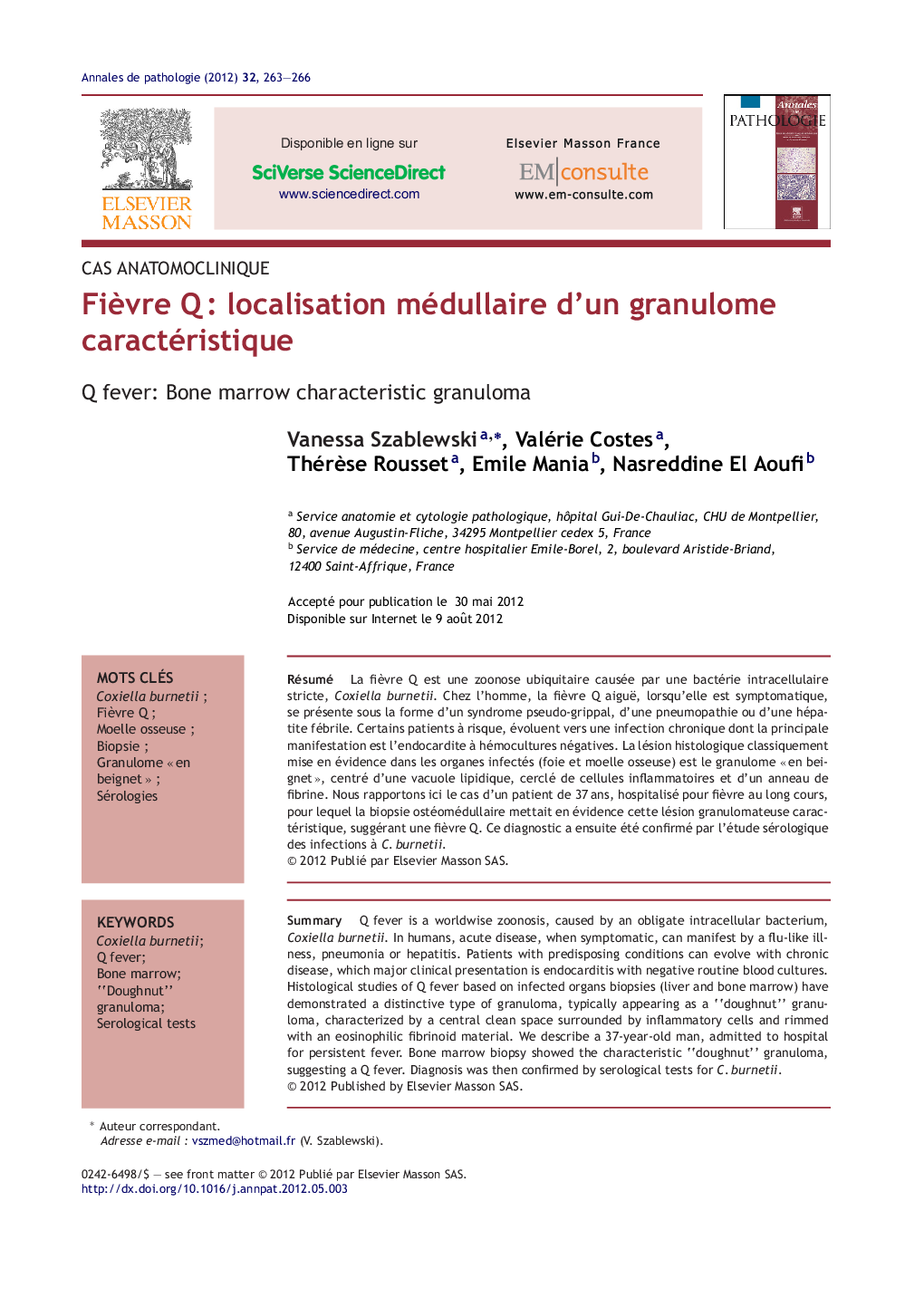| Article ID | Journal | Published Year | Pages | File Type |
|---|---|---|---|---|
| 4128323 | Annales de Pathologie | 2012 | 4 Pages |
Abstract
Q fever is a worldwise zoonosis, caused by an obligate intracellular bacterium, Coxiella burnetii. In humans, acute disease, when symptomatic, can manifest by a flu-like illness, pneumonia or hepatitis. Patients with predisposing conditions can evolve with chronic disease, which major clinical presentation is endocarditis with negative routine blood cultures. Histological studies of Q fever based on infected organs biopsies (liver and bone marrow) have demonstrated a distinctive type of granuloma, typically appearing as a “doughnut” granuloma, characterized by a central clean space surrounded by inflammatory cells and rimmed with an eosinophilic fibrinoid material. We describe a 37-year-old man, admitted to hospital for persistent fever. Bone marrow biopsy showed the characteristic “doughnut” granuloma, suggesting a Q fever. Diagnosis was then confirmed by serological tests for C. burnetii.
Keywords
Related Topics
Health Sciences
Medicine and Dentistry
Pathology and Medical Technology
Authors
Vanessa Szablewski, Valérie Costes, Thérèse Rousset, Emile Mania, Nasreddine El Aoufi,
